How To Apply DRYLOCK (Step by Step Guide)

New home foundations have been constructed from concrete for at least the last 50 years. Concrete is consistently ranked among the toughest materials in home improvement, offering unmatched strength and durability. Despite its toughness and enduring qualities, concrete is far from indestructible.
The material is naturally porous and very susceptible to the moisture leaving homes vulnerable to leaks, mold, and mildew. In order to avoid issues like this, it’s essential that you waterproof your bare masonry walls, whether they are made of concrete or another material. DRYLOK is formulated explicitly to waterproof masonry surfaces whether they are interior, exterior, or above or below grade.
The specific DRYLOK products may vary depending on your particular situation. To apply DRYLOK, you will need to prep and clean the area before sealing holes and joints with DRYLOCK fast plug. Then, apply two coats of the DRYLOK waterproofer and allow it to dry.
Applying DRYLOK differs only slightly from the basic steps involved in painting a wall and is easily achievable for the average homeowner. We’ll outline all the steps and provide enough detail to walk you through the process. Additionally, we’ll explain what DRYLOK is and how it works.
Do You Need Foundation or Basement Waterproofing?
Get free, zero-commitment quotes from pro contractors near you.

What Is DRYLOK, And How Does It Work?
Simply put, DRYLOK is used to prevent water from penetrating through foundation walls and possibly destroying your foundation. Basement foundations, most often made of concrete, are incredibly porous and can allow moisture and water to seep through. This will most often result in mold or fungi growth and can cause a number of insect and rodent problems down the line.
Unlike conventional paint that bonds to a surface and has the potential to come off with water pressure, DRYLOK penetrates the pores in the masonry surface, bonding and creating an impenetrable barrier.
DRYLOK also has the ability to prevent efflorescence. This refers to the powdery salt deposits that appear on masonry surfaces. They are caused by the moisture that comes through porous surfaces and turns into a gas. DRYLOK stops the gas from coming through the foundation since it creates a barrier that prevents the appearance of these calcium deposits.
How To Apply DRYLOCK
A product can be absolutely amazing and the best available of its kind; however, it’s not very useful if it’s not applied correctly. By following the steps below, you’ll be able to apply DRYLOCK correctly to experience its maximum effectiveness.
Step 1: Prepare The Surface And Work Area
Prior to beginning any prep, slip-on safety eyewear as well as a face mask to protect your eyes and respiratory system from any harsh materials released during cleaning. Also, be sure that the area you’re working in has adequate ventilation and good airflow. This is especially important if you’re working in a basement.
As with any painting project, prepping the surface is an integral first step. Using a wire brush, thoroughly scrub the surfaces that will be painted to eradicate any loose or damaged mortar, dust, dirt, and efflorescence.
Important Note
Efflorescence can be difficult to remove entirely by just brushing. Wearing vinyl gloves, add some undiluted vinegar to a sponge and scrub until the material has dissolved. Make sure the wall has dried completely before applying any DRYLOK.
You’ll also want to make sure that old paint is removed by sand-blasting or by other suitable means. Keep in mind that DRYLOK can be used on top of any other cementitious-type waterproofing paint that is in good condition. However, it should not be painted over oil or latex-based paints. DRYLOK will adhere but will not be effective in waterproofing the surface.
Step 2: Seal Holes And Joints Using DRYLOK Fast Plug
Examine the walls you will be waterproofing for any gaps, cracks, holes, or joints that will require sealing. You will then fill these cracks and holes using DRYLOK Fast Plug. This product is a quick-setting hydraulic cement that can patch holes even while water is still flowing through them.
Before filling the holes, the area that is to be patched needs to be wet down and chiseled out into the shape of an inverted “V.” This will allow the patch to bond into the surface and the DRYLOK Fast Plug to cure properly. Since this material dries quickly, only mix enough that can be used in 3 to 5 minutes.
For sealing floor or wall joints, clean the area, wet it down, and fill all these gaps using DRYLOK Fast Plug. This product will set in approximately 3 minutes.
Step 3: Begin Applying DRYLOK Masonry WaterProofer To The Walls
Now that the walls have been prepared properly, make sure that the surface and air temperature is above 50 degrees Fahrenheit, as DRYLOK recommends this. Give the product a good stir before and during the application, and for best results, wait for a day that is rain-free.
Only apply DRYLOK Masonry Waterproofer to clean, dry, bare masonry. One gallon of this product is enough to cover 75 to 100 square feet of the surface area keeping in mind the two coats that are required. Using a stiff bristle brush, begin applying the first coat.
The material will appear milky in the can and on the surface but will dry transparent. Unlike drywall, painting on masonry like concrete will require you to take special care in your strokes and fill in every crack and crevice on the surface.
Step 4: Applying The Second And Final Coat Of DRYLOK
This thick masonry paint is designed to provide a waterproof barrier and should not be painted on like regular paint. Make sure that you take your time to fill all the pores and voids in the surface as you’re applying the paint before moving on to the second coat.
Two coats are mandatory in order to ensure effective waterproofing. Follow the manufacturer’s directions to allow amble dry time in between coats. The second and final coat can then be brushed or rolled on with a thick, fuzzy-nap roller.
How Long Will DRYLOCK Last?
If applied correctly and according to directions, DRYLOK Original Masonry Waterproofer will last up to 10 years. Their Extreme Masonry Waterproofer product is warranted for 15 years, and the DRYLOK Floor & Masonry Waterproofer will last you around seven years. Though guaranteed for this long, assuming proper application, the product often lasts longer.
It’s essential that you take your time and apply the product correctly so you can have the best end result. If you don’t apply it correctly, then you can expect it to last you less than 3 to 5 years. Not to mention, it may not even do the job for which it’s intended to do.
Painting On Top Of DRYLOCK
DRYLOK offers its Latex Base DRYLOK and Oil Base DRYLOK as practical finish coats. However, if you are applying paint for decorative purposes, you can use any good quality latex paint. You should wait 30 days before painting over Oil Base DRYLOK and if applying Latex Base DRYLOK on top, wait 24 hours.
You may be tempted to paint over it before it’s fully ready, but this would be a bad idea. It will take away from the effectiveness of the DRYLOCK. Not to mention, the DRYLOCK will mix in with the paint, and it won’t come out the way that you want it to. You will most likely have to remove it all to do it all over again, so you may as well wait until you paint to bypass this hassle.
Using DRYLOCK On Floors
Although the Extreme and Original Masonry Waterproofer products are not designed to be used on floors, they do offer a product that works on flooring. Use the DRYLOK Floor & Wall Masonry Waterproofer for your floors. It will sustain foot traffic as a finishing coat and can be used prior to floor paint or any latex-based glues.
Related Questions
Can you apply DRYLOK on top of the old DRYLOK?
In short, yes, DRYLOK is very easy to recoat. Depending on your walls’ condition, you can choose to use their Masonry Waterproofer or the Concrete Floor Paint.
Can you use a roller for the first coat of DRYLOK?
While a stiff bristle brush is most recommended to get into all of the crevices, you can use a roller if that’s your preference. However, you’ll need to back brush to ensure that the DRYLOK penetrates into all of the pores and pinholes on the surface.
How can you tell if the surface is dry enough to paint?
You can test the wetness of the surface by simply rubbing your fingers over the area. If they remain dry, it is safe enough to paint. If your fingers appear to shine with moisture, the surface is not ready to painted on. Instead, wait for a rain-free, dry period and try the test again.
Do You Need Foundation or Basement Waterproofing?
Get free, zero-commitment quotes from pro contractors near you.

In Summary
DRYLOCK is a wonderful product if you need to waterproof your cement or bare masonry. However, it’s only as good as its application. By taking the time to apply the DRYLOCK correctly, you will ensure that the application will last you a long time. However, if you rush through it, you run the risk of it not doing the job that it’s intended to do.
Applying DRYLOCK isn’t hard. It’s a matter of ensuring that your surface area is clean and free of debris. From there, you need to fill joints and holes with the DRYLOCK fast plug before applying two coats of the product; It’s that easy!
Related Guide

Jessica considers herself a home improvement and design enthusiast. She grew up surrounded by constant home improvement projects and owes most of what she knows to helping her dad renovate her childhood home. Being a Los Angeles resident, Jessica spends a lot of her time looking for her next DIY project and sharing her love for home design.
More by Jessica Stone



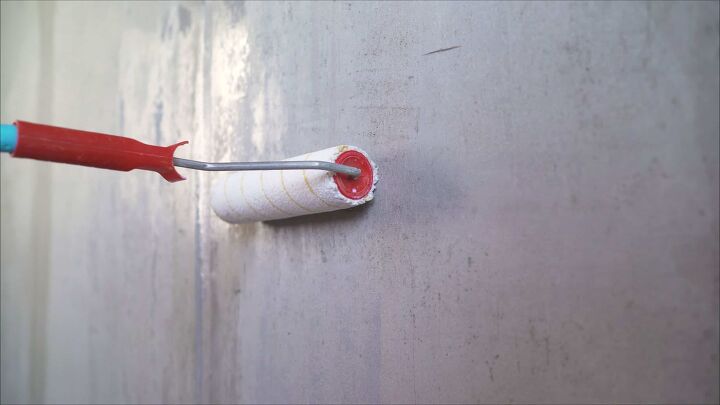






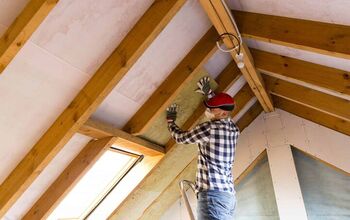

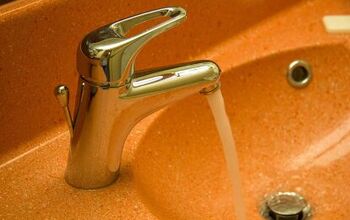
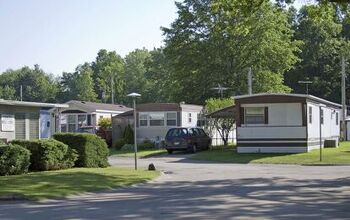
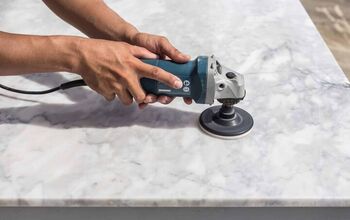








![Cost To Drill A Well [Pricing Per Foot & Cost By State]](https://cdn-fastly.upgradedhome.com/media/2023/07/31/9074980/cost-to-drill-a-well-pricing-per-foot-cost-by-state.jpg?size=350x220)


![Standard Dining Room Table Dimensions [for 4, 6, 8, 10 and 12 People]](https://cdn-fastly.upgradedhome.com/media/2023/07/31/9074335/standard-dining-room-table-dimensions-for-4-6-8-10-and-12-people.jpg?size=350x220)
